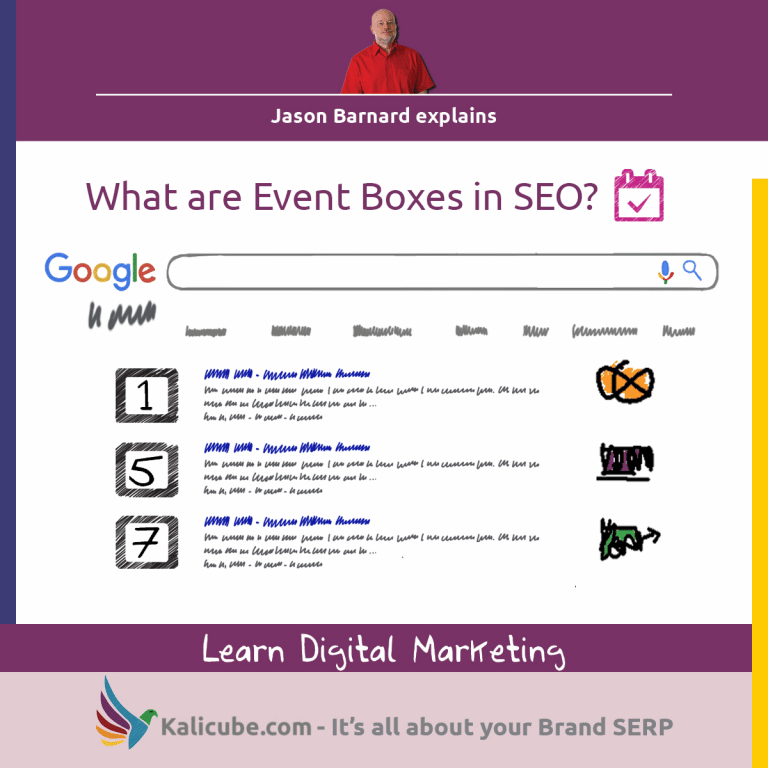ChatGPT on Bing / Bing Chat Search: How Does it Work?

Bing Chat uses a combination of ChatGPT (an AI language model developed by Open AI) and the Bing search engine results to provide a user with a summary of the best information on the SERP. Through a series of algorithmic processes, Bing Chat can serve users the information they need quickly. This removes the need to bounce around the search results to find what they are looking for. Bing Chat is conversational, and users can ask additional questions in Bing Chat until they find the answer they need or the website that best serves their query.
Microsoft (the owner of Bing) describes Bing Chat as “your AI-powered co-pilot for the web”. When Microsoft launched Bing Chat, they described it as an “Answer Engine”.
In this article, you will get an overview of the process Bing uses to generate answers in their ChatGPT SERP Feature (Bing Chat), and also two helpful analogies that will help you understand how to approach optimising your content for Chat Features in Google, Bing and other Search Engines.
Bing Chat and Knowledge Panels save time for users
Yusuf Mehdi, Corporate Vice President, Modern Life, Search, and Devices at Microsoft states that most website visits result in bounces. Bounce rates are significantly higher on informational queries as users bounce back and forth to gather snippets of information from different parts of the search results to get the answer they need.
Yusuf Mehdi talks about the suggestions on the left-hand side of the SERP and the answers on the right-hand side SERP. At Kalicube, we refer to the Left and Right Rails of the SERP when working with clients.
According to Mehdi, the answers on the right-hand side (including Bing Chat and Knowledge Panels – if they are triggered by the query) are there to save the user time.
Knowledge Panels and the Bing Chat feature aim to improve the user experience by minimising the bouncing between search results to get the information. They provide a summary of the information in the pages behind the SERP in order to save the user the time and effort of visiting multiple pages and collating the information manually.

Once again, this fits with the stated aim of both Bing and Google: to get the user to the correct answer to their question (or the best solution to their problem) as efficiently as possible.
But not all queries in the Bing search bar result in a ChatGPT SERP Feature in the Bing search results.
What Search Queries Trigger the ChatGPT SERP Feature on Bing?
The ChatGPT Box doesn’t appear for every search on Bing. It will appear on the right-hand side of Bing’s search results on the Desktop when Bing’s Whole Page Algorithm considers that the intent of the search query is either informational, research intent or appropriate for a potential question and answer session.
There are multiple types of queries that fulfil these criteria.
- Explicit questions such as “What is Kalicube” invite questions and answers.
- Implicit questions such as “Kalicube Services” and even Entity Names like “Kalicube” can also trigger a ChatGPT box.
What is the Process for Bing Chat ChatGPT to Create the Answers it Provides?
Bing Chat works with any query – explicit questions you ask, and any other input like statements and one-word queries. When the input is not an explicit question, Bing will treat it as an implicit question and answer what it considers the most probable intent.
Here is how Fabrice Canel, Principal Program Manager at Bing presents it:

Bing takes the input, and Bing Orchestrator uses Natural Language Processing (NLP) to understand the intent, then conducts a normal Bing search behind the scenes.

When the answer to the question is unclear, ambiguous or complex, it will make two, three and sometimes as many as four searches like this:

Behind the scenes (at the bottom of the Prometheus Model image above), the algorithms conduct an analysis of the content of the pages behind the search results using Next-Generation GPT. They are leveraging their snippet algorithms to bring together advanced NLP, data from their Large Language Models and factual information from their Knowledge Graphs.
The answer is a rewritten summary of the best answers it has found in those search results. The words are close variants of, or the exact text provided by the websites and the whole answer will generally contain chunks from multiple sources.
If you are into Featured Snippets, then you can see this as a “Frankenstein’s Monster Featured Snippet”, as we’ll see.
If you are more interested in Knowledge Panels, like me, you can see this as a dynamic Knowledge Panel.
Pro Tip: The Advanced GPT can return original text without citing sources.
Looking at Bing Chat as Featured Snippets or Knowledge Panels
The Micro Featured Snippets Approach
Since it is stitching together several sentences from multiple web pages, the functionality on Bing is like a series of mini Featured Snippets pieced together. This isn’t a huge leap since Bing and Google already take different parts of a webpage and stitch them together to create a Featured Snippet (the Q&A in Bing-speak).
Strategies you use for Featured Snippets will work here, but you need to think more micro. Rather than headings, paragraphs, tables and lists, you need to think in terms of headings, individual sentences, table rows and individual items in lists.
But there’s more. You can take this to the next level.
Three years ago, Ali Alvi (head of Q&A / Featured Snippets at Bing) told me that his algorithms did NOT use the Knowledge Graph. At the time, the algorithms made the best guess of the implicit question that the passage of content answers without context beyond the page itself.
The approach remains the same, however Fabrice Canel (Prinicpal Program Manager at Bing) confirmed to me that, thanks to ChatGPT and the huge advances in Microsoft’s own Machine Learning, Bing’s new Chat Answer Engine does look at context beyond each webpage and does double check facts using thier Knowledge Graph.
Bing has improved its algorithms and because Bing Chat uses ChatGPT, we can leverage the way we present our information so it satisfies the Q&A approach to Micro Featured Snippets in Bing Chat.
The Dynamic Knowledge Panel Approach
Thanks to Fabrice Canel, Principal Program Manager at Bing, we know that Bing is referencing its Knowledge Graph. In the results, we can clearly see this since Bing Chat cites its sources, but sometimes information comes from their Knowledge Graph because some of the answer is not present in the web pages it is citing.
Incorrect information has caused embarrassment but it’s important to remember the Knowledge Graph is not exhaustive – probably only a few hundred thousand billions of facts in a world that contains facts that can be counted in multiples of a googolplex. And googolplex, that is a “thing” – read about Googleplex here.
Back to Knowledge Panels. A Knowledge Panel on Bing or Google serves a specific purpose. For a search query about an Entity, the Knowledge Panel exists to provide a convenient structured summary of the factual information from the search results with the aim of saving the user the time and energy of clicking on multiple links.

That sounds very much like the Answer Engine Chat feature on Microsoft Bing:
It is there to provide a convenient summary of the factual information from the search results with the aim of saving the user the time and energy of clicking on multiple links to gather the information themselves.
The Knowledge Panel also has a fact-checking system based on the Knowledge Graph to (generally) safeguard factual accuracy. So does Bing Chat. And so will Bard on Google.
Pro Tip: Managing your presence in Knowledge Graphs of Microsoft, Google, Apple, Amazon and other big tech companies is crucial.
Features That Don’t Fit Into Featured Snippets or Knowledge Panels
Bing Chat can display the references it uses, allowing the user to research individual elements in the answer further in the specific content it was taken from.

And, of course, it allows for an interactive exchange of questions and answers where the previous exchanges create a context that affects future exchanges.

The suggested questions are driven by the Engine’s understanding of the entity or topic. In this case, Bing Chat associates “Kalicube” with Brand SERPs and Knowledge Panels. Importantly, with the right strategy (see below), brands can feed the algorithms with questions. For example, in this example Bing Chat suggests “What is Brand SERP?” and “What is Knowledge Panel Management?”, both of which are terms we coined and questions only we answer. Both questions are valuable to us as a company because the bring the user down the funnel.

Google’s generative AI in Search Works on the same approach
Read more about Google’s Generative AI in Search here >>
Kalicube can Entrench You or Your brand in ChatGPT, Bard and Google’s Generative AI in Search
All of this is hugely good news for Kalicube. The Kalicube Process and Kalicube Pro are designed to “educate” the Knowledge Algorithms of Google, Bing, Apple, Amazon and other companies using Knowledge Algorithms.
Using the Kalicube Process, any company or person can have a Knowledge Panel which means that they will be listed in the Knowledge Graphs used by Google and Bing, which is a huge advantage for “ranking” in their AI-driven chatbots.
We help Google and Bing understand the facts about your cornerstone Entity: the company, major products, and people. Once they understand and are confident about the facts surrounding your Entity, feeding the algorithms with additional related information is significantly easier.
This means your brand earns a place in the Knowledge Graph and is a trusted fact the engines can serve confidently – both in a Knowledge Panel and in the Bard and Bing Chat results. Our approach is a future-proof approach to your digital presence across search.
For the last 10 years at Kalicube, we have perfected the strategies you can use to educate Knowledge Algorithms about the facts about entities.
We do this through–
- Clear explanations that are easy for the Knowledge Algorithms to consume, process and digest;
- Proactively correcting corroborative information to ensure consistency of information across the web;
- Carefully building sources the algorithms’ trust BUT are owned and controlled by our clients (publishers and authors – think E-E-A-T on steroids).
We support this approach with Schema Markup. Schema Markup is not a standalone strategy as many people believe it to be. We design our Schema.org Markup specifically for educating these algorithms.
Learn more about the Kalicube Process and Kalicube Pro and learn how to establish your place in the new world of search.
Contributor:

Jean Marie
Website Content Manager. Joined Kalicube in February 2022
LinkedIn: www.linkedin.com/in/jeanmarielaurente
Email: [email protected]






